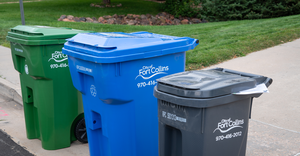Waste Industry Works to Drive Down Injury and Illness Rates: Part One
The waste and recycling industry has been working in conjunction with the Occupational Health and Safety Administration (OSHA) to bring down injury and illness rates. Attendees at Wastecon in San Diego heard from speakers at major industry associations including NWRA, SWANA and ISRI about industry efforts during the event's Safety Summit sessions.

The waste and recycling industry has been working in conjunction with the Occupational Health and Safety Administration (OSHA) to bring down injury and illness rates.
Attendees at WASTECON 2022 in San Diego heard from speakers at major industry associations including NWRA, SWANA and ISRI about industry efforts during the event's Safety Summit sessions.
OSHA Region 9 Administrator Jim Wulff first spoke to WASTECON attendees about compliance and enforcement procedures and how business owners can prepare and work with the agency to achieve safety goals above compliance level.
The agency has requested an $89 million increase in its 2023 budget to invest in workers, their families and surrounded communities and boost whistleblower protection.
"We've received a lot of resources and money to bolster our enforcement ranks, our compliance assistance and our state plan monitoring," Wulff indicated. "What we want to do with the upcoming budget is to restore our rulemaking and guidance capacity."
This included devoting up to $10 million to advance high-priority rulemaking and strengthening enforcement programs. Wulff indicated that the agency has had a decrease in compliance officers driven by the COVID-19 pandemic, and it will allocate funds to hire another 200 inspectors around the United States along with technical staff.
In order to replenish an aging employee pool, OSHA is establishing a "safety tech" junior-level position that will work as a mentorship opportunity for those who wish to become compliance officers.
Wulff said the agency also plans to expand whistleblower protection with an expanded budget. The number of complaints to OSHA have been "exponentially increasing over the last couple of years."
About 50 percent of the states in the U.S. have their own OSHA programs. Federal OSHA provides 50 percent of the funds through grant programs and the state matches the other half. With additional funds, state plans can expand programs.
However, Wulff said, "OSHA understands that we can't enforce ourselves out of standards." He stressed the agency's compliance assistance programs including voluntary inspection and partnership programs.
"Support is a key core operation that we have," he commented. "Our mission is to ensure that businesses and stakeholders have the materials that they need so that they can help develop their safety and health management systems or training programs. The bottom line is we want to prevent injuries and illnesses. So whatever way we get there, that's going to be a good day."
Editor's Note: This is part one in a two-part series covering safety and compliance in the waste and recycling industry. Part one provides a general update on the state of OSHA. Part two dives into association resources.
About the Author
You May Also Like




